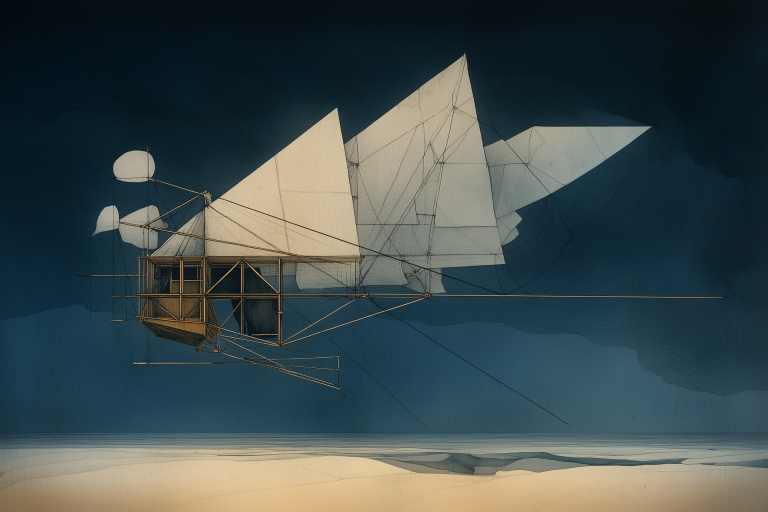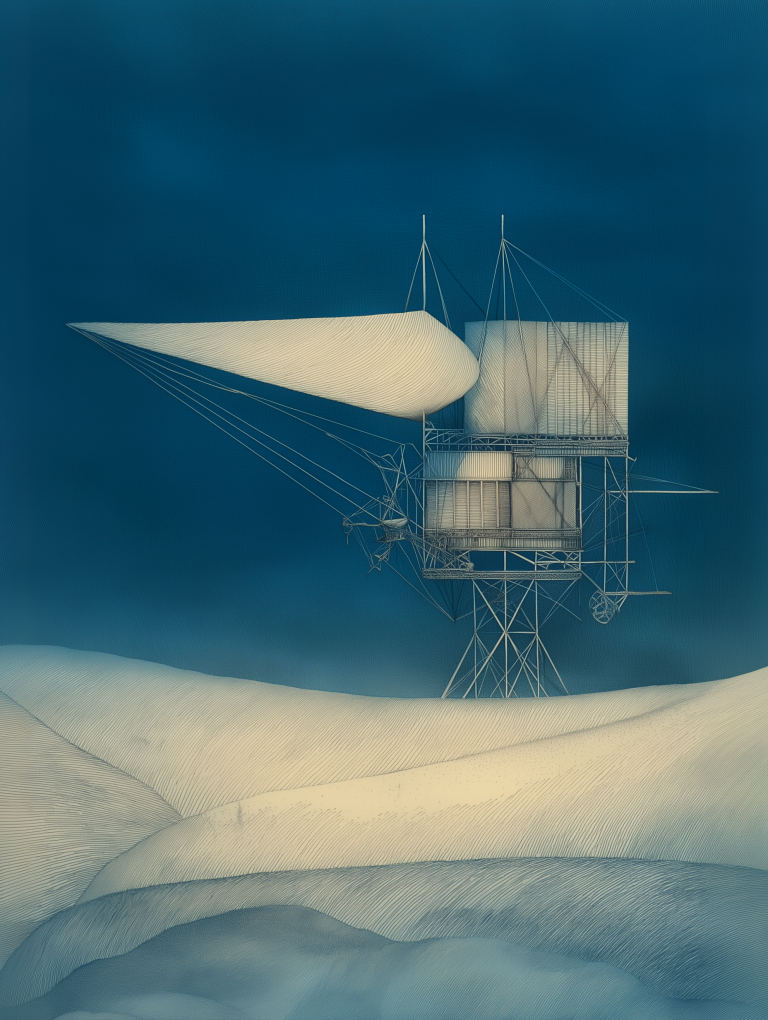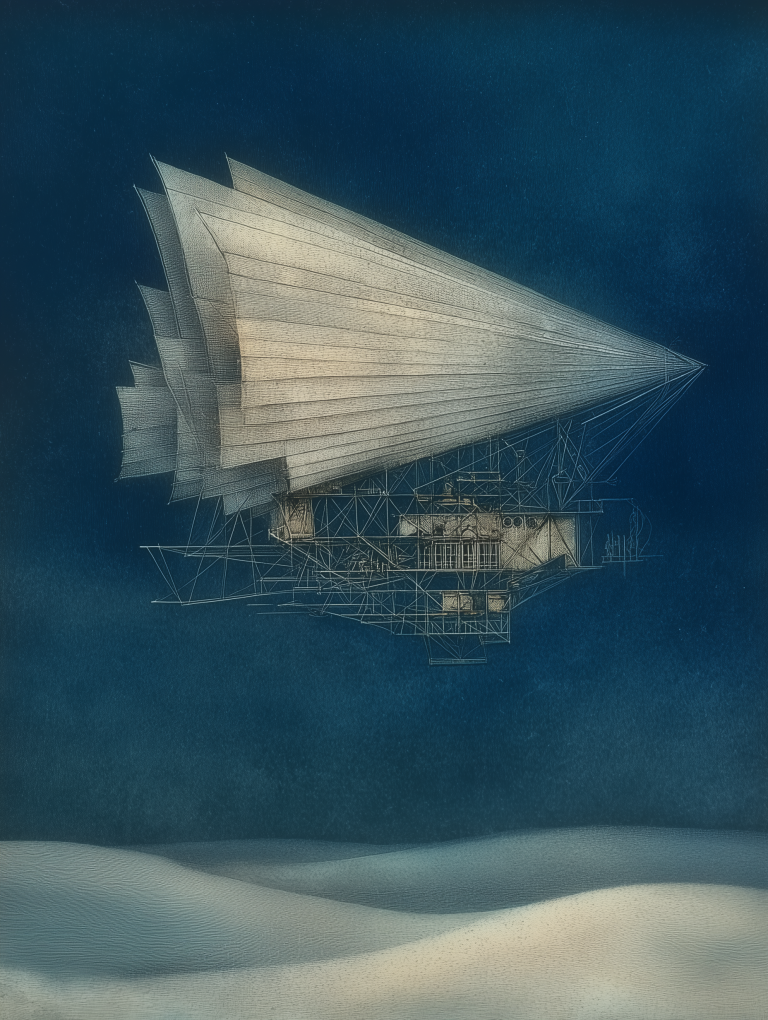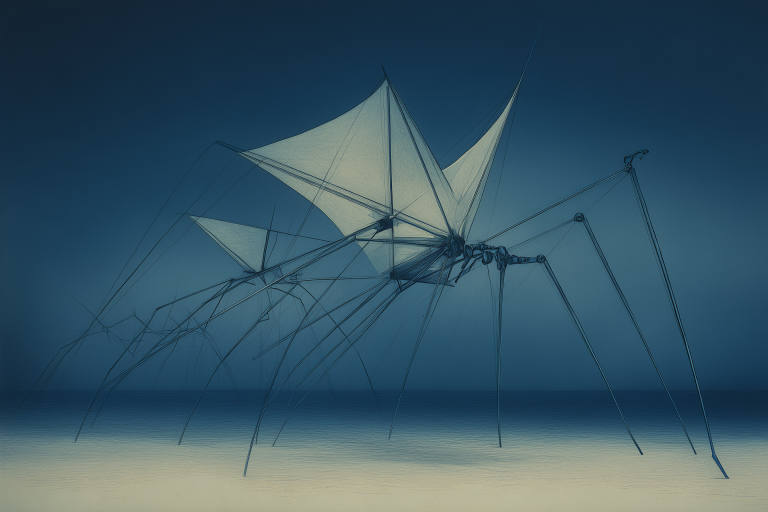
New on the beach of the winds
There are also a large number of sculptures on the beach. Their significance is not known. They look very modern with their simple, clear forms.
The arrival of the new large planes on the beach of the winds has caused excitement among the beach residents. However, there are also quite a few who view these flying objects with concern.
Nothing is ordinary on the beach of the winds. Not the small huts that people use for changing, not the strange planes that fly low over the beach and certainly not the unique flying houses.
Some of the flying machines that can be seen on the beach of the winds are reminiscent of the adventurous flight of Icarus from Greek mythology. But despite the laws of nature as we know them, they do not crash, but circle above the beach with a certain elegance.
The impressive airships on the beach of winds are primarily intended to supply the residents. They can silently transport large loads such as building materials for the flying houses to the beach. Where the houses are supposed to float above the beach.
It is the winds on this beach that perform miracles and make things fly like you can’t see anywhere else. However, they can also be a destructive force. The many boat wrecks on the beach bear witness to this.
Or, can AI be creative? In really every article and in every discussion about art and AI, these questions are asked again and again. The answers offered are very different. The question alone reveals that the panellists have probably not dealt intensively with the practical application of imaging neural networks. However, the clear answer to the question must be no (at least so far and when the question is posed in this way).











